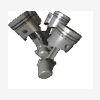dyno settings query
Announcements
-
Similar Content
-
Latest Posts
-
By joshuaho96 · Posted
apparently people are still having trouble with this as well -
Only problem with that is it's obvious to the police, but same same with the aes valve. Most people get the valve precat so it's harder to see when looking under the car from the rear.
-
It's been a looooooong while since I did this, but... No, from memory there's a feed ring around the inside of the squirter. Otherwise, they would have to be too precise when machining the threads in the block, and the banjo bolts themselves.
-







Recommended Posts
Create an account or sign in to comment
You need to be a member in order to leave a comment
Create an account
Sign up for a new account in our community. It's easy!
Register a new accountSign in
Already have an account? Sign in here.
Sign In Now